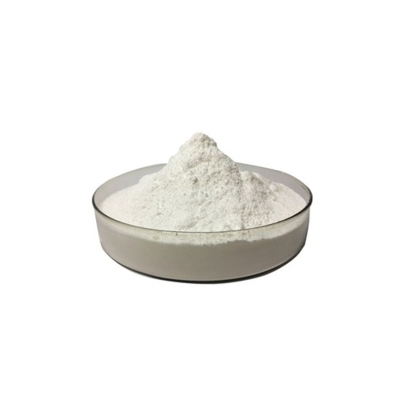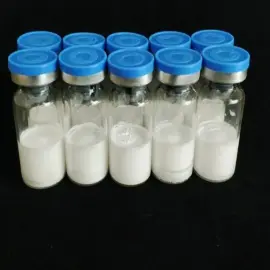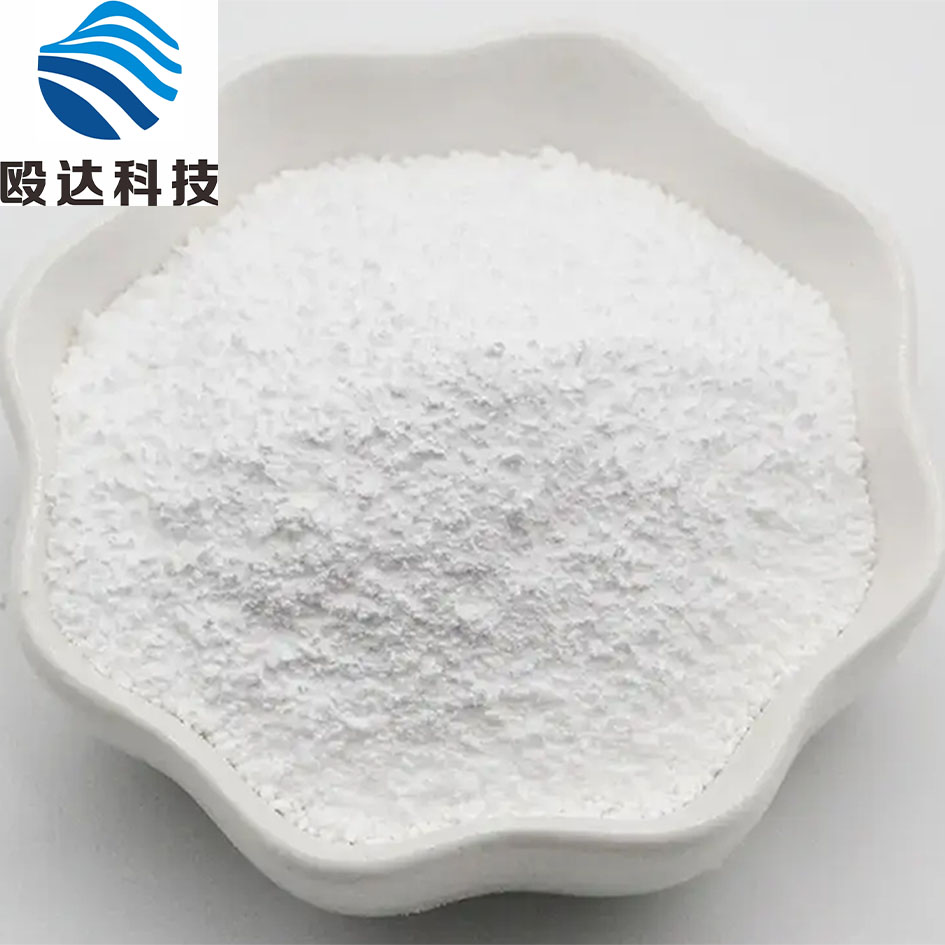-
Categories
-
Pharmaceutical Intermediates
-
Active Pharmaceutical Ingredients
-
Food Additives
- Industrial Coatings
- Agrochemicals
- Dyes and Pigments
- Surfactant
- Flavors and Fragrances
- Chemical Reagents
- Catalyst and Auxiliary
- Natural Products
- Inorganic Chemistry
-
Organic Chemistry
-
Biochemical Engineering
- Analytical Chemistry
- Cosmetic Ingredient
-
Pharmaceutical Intermediates
Promotion
ECHEMI Mall
Wholesale
Weekly Price
Exhibition
News
-
Trade Service
At present, 5 CAR-T products have been approved by the FDA in the world to treat many different types of hematological malignancies
.
CAR-T has been advancing all the way in the field of hematological tumors, while in the field of solid tumors, which accounted for more than 90%, CAR-T therapy has been progressing slowly and with many difficulties
Aiming at the "dilemma" of CAR-T solid tumors, this article summarizes the four key challenges currently facing and the latest research progress in the near future
.
0 1 The "dilemma" of CAR-T solid tumors
0 1 The "dilemma" of CAR-T solid tumorsCAR-T's entry into solid tumors mainly faces the following major challenges:
1.
1 Lack of effective targets
1 Lack of effective targets
Most of the targets of hematological tumors are single and specific.
There are very few tumor-specific antigens (TSA) in solid tumors.
Most of the tumor-associated antigens (TAA) that are highly expressed in tumors are also expressed in normal tissues.
.
This brings a high risk of off-target, and safety becomes a key issue
Source: Nature Reviews Drug Discovery
The picture above shows the serious adverse reactions caused by "on target, off-tumour" in clinical trials of T cell therapy in recent years summarized by Nature Reviews Drug Discovery
.
At the same time, solid tumors are highly heterogeneous.
1.
2 Transport and infiltration of CAR-T
2 Transport and infiltration of CAR-T
Solid tumors have a mechanism that interferes with T cell transport and immune escape
.
On the one hand, unlike blood tumor cells, which are scattered, solid tumors often form solid masses.
On the other hand, some solid tumors can inhibit the secretion of certain chemokines
.
The interaction of chemokines and their receptors promotes the migration of T cells to the tumor microenvironment
1.
3 Immunosuppression of the tumor microenvironment
3 Immunosuppression of the tumor microenvironment
Studies have found that low pH, low oxygen, and high permeability in the tumor microenvironment (TME), as well as immunosuppressive mechanisms, are extremely unfavorable for the survival of T cells and the effectiveness of immunity
.
The external environment that restricts CAR-T's anti-tumor effect (Source: Nature Reviews Drug Discovery)
There are immunosuppressive cells in TME, such as regulatory T cells (Treg), bone marrow-derived heterogeneous cells (MDSC) and M2 type macrophages
.
These immunosuppressive cells release cytokines such as transforming growth factor β (TGF β) and interleukin-10 (IL-10) in solid tumors, reducing the anti-tumor effect of CAR-T after reinfusion
1.
4 Endogenous T cell inhibitory signal
4 Endogenous T cell inhibitory signal
There is an endogenous regulatory mechanism for the immune activity of T cells.
When T cells are overactive, molecules such as PD-1 and CTLA4 play a role to maintain immune balance
.
After CAR-T cells are activated by antigens, PD-1 and CTLA4 bind to related ligands to inhibit the proliferation of T cells and the secretion of related cytokines
02 CAR-T new strategy against solid tumors
02 CAR-T new strategy against solid tumors CAR-T faces multiple dilemmas on the road to fighting solid tumors.
The following summarizes some new breakthroughs of CAR-T in solid tumors based on the above mechanisms
.
CAR-T's new strategy to deal with solid tumors (Source: Cancers)
2.
1 Improve CAR-T's recognition of antigens
1 Improve CAR-T's recognition of antigens
Common TAA targets in solid tumors include CEA, HER2, GPC3, EpCAM, etc.
TSA has fewer targets, which severely limits the application of CAR-T in solid tumors
.
In addition to continuing to find and develop CAR-T therapies for TSA targets, CAR-T cells can also be modified to improve the ability to recognize tumor antigens
On April 28, a study on CAR-T therapy for solid tumors by the University of California, San Francisco (UCSF) was published on the cover of Science Translational Medicine
.
Professor Wendell Lim’s team implanted the synNotch system in CAR-T cells.
Under the control of synNotch, CAR that recognizes the relevant TAA will only be expressed on T cells that have migrated to the tumor, and will not attack cells in normal tissues.
Improve the specificity of CAR-T recognition antigen
.
(Science Translational Medicine, 2021, 13, 7378)
The prime-and-kill circuit in T cells provides a general strategy to overcome antigen heterogeneity while still maintaining high tumor specificity (Source: Science Translational Medicine)
Recently, the team of Carl H.
June, the godfather of CAR-T therapy, and Andy J.
Minn, professor of radiation oncology at the Perelman School of Medicine, have also discovered a new way to improve CAR-T's recognition of tumor cells—delivering a naturally occurring RNARN7SL1 With foreign antigens into tumor cells, CAR-T is equipped with a variety of new "weapons", making CAR-T no longer "alone"
.
Multi-armor CAR-T can improve the infiltration and recognition of tumor cells, and in the case of antigen loss, it can also activate endogenous CAR-T to eliminate tumors
.
(Cell,2021, 184, 19, 4981-4995)
"Multi-armor" CAR-T can significantly improve the anti-cancer effect (Source: Cell)
In addition, in addition to modifying CAR-T cells themselves, scientists also use external conditions to improve CAR-T's specific recognition of tumor cells
.
On August 12, researchers from the University of California, San Diego published a research progress in Nature Biomedical Engineering.
The combination of ultrasound and CAR-T cell therapy can destroy tumor tissues while protecting normal tissues, greatly improving The safety of CAR-T therapy
.
(Nature Biomedical Engineering, doi.
org/10.
1038/s41551-021-00779-w)
2.
2 Multi-target combination
2 Multi-target combination
At present, bispecific CAR-T targeting two targets has been applied in the field of hematological tumors, which can improve CAR-T's ability to recognize antigens, increase efficacy and safety, and reduce the risk of tumor escape
.
CAR-T therapy targeting two or more different TAAs is also an important direction for the treatment of solid tumors
.
On September 23, Nature Cancer published an article on the research progress of dual-target CAR-T for neuroblastoma (NB) model
.
The study targets two NB-related antigens, GD2 and B7-H3, and provides CD28 and 4-1BB co-stimulation, which achieves rapid and sustained anti-tumor effects in mice, and can prevent the occurrence of low antigen density Tumor immune escape
.
(Nature Cancer.
2021, 2, 904–918)
This experimental strategy can prevent tumors from escaping due to antigen loss (Source: Nature Cancer)
2.
3 Improve T cell infiltration and transport
3 Improve T cell infiltration and transport
In the treatment of hematological tumors, CAR-T usually uses intravenous infusion.
In solid tumors, in order to improve the infiltration and transport of CAR-T, intratumoral administration can be used
.
The intratumoral administration method has obtained good results in the research of pleural malignant mesothelioma, head and neck cancer and malignant glioma
.
Chemokines are important molecules that affect T cell infiltration.
In recent years, research on chemokines has brought new hope to CAR-T to overcome solid tumors
.
On September 22, Guangzhou Baiji Gene R&D team modified the chemokine receptor CXCR5 on the surface of CAR-T cells targeting EGFR for the first time for the treatment of non-small cell lung cancer (NSCLC)
.
The results of in vivo CAR-T tracing experiments show that CAR-T cells modified by CXCR5 can migrate and penetrate into tumor lesions in a targeted manner, and significantly clear the tumor, while greatly reducing the potential extra-tumor toxicity
.
(Molecular Therapy-Oncolytics, 2021, 22,507-517)
In vivo anti-tumor activity of CAR-T cells (Source: Molecular Therapy-Oncolytics)
In addition, there are also some studies that target fibroblast activation protein (FAP) expressed in tumor stromal cells, which can block the formation of stromal cells and enhance CAR-T infiltration of solid tumors
.
2.
4 Relieve immunosuppression
4 Relieve immunosuppression
The main reason for the immunosuppressive effect of TME is the existence of immunosuppressive cytokines, immunosuppressive cells and the lack of immune activating factors
.
The immunosuppressive effect of TME is one of the key factors affecting the effectiveness of CAR-T in solid tumors
.
Some studies have modified CAR-T cells to overexpress cytokines that promote inflammation (such as IL-12, IL-15, and IL-18).
Such CAR-T cells are called “armored” CAR-T cells ( armoured CAR-T cells), which can adjust the local microenvironment
.
Studies have confirmed that in ovarian cancer, IL-12 can improve the proliferation and survival of T cells, and resist apoptosis and PD-1 induced functional inhibition
.
In addition, related studies on CAR T cells that secrete IL-18 have shown that these cells have increased proliferation and infiltration capacity, and can recruit endogenous immune cells to regulate TME
.
Reduce immunosuppression in TME (Source: American Journal of Cancer Research)
At the same time, since TGFβ is an important immunosuppressive pathway, blocking TGFβ signaling can also improve the anti-tumor effect of CAR-T
.
In addition to the immunosuppressive effect of TME, T cells also have an endogenous immunosuppressive mechanism
.
At present, methods such as gene silencing, PD-1 switch receptors, and combination with PD-1 inhibitors are mainly used to avoid endogenous inhibitory signals
.
Relieve endogenous T cell inhibitory signals (Source: American Journal of Cancer Research)
03Combination is the future direction
03Combination is the future direction Although the remission rate after CAR-T treatment of hematological malignancies is very high, achieving sustained remission is still a big challenge, and patients often experience recurrence of the disease
.
The efficacy of CAR-T against tumors is affected by many factors such as the activation and expansion of T cells in the body, killing effect and persistence, and is also closely related to tumor types and individual differences in patients
.
In the face of highly complex solid tumors, it is difficult to balance these factors with a single CAR-T therapy
.
In addition to strengthening the killing effect of CAR-T itself on tumor cells, efforts should also be made to explore strategies to cope with problems such as CAR-T expansion and durability
.
CAR-T combined with traditional radiotherapy and chemotherapy, immune checkpoint inhibitors, vaccines, and oncolytic viruses have shown broad application prospects.
It is expected to be achieved by directly enhancing T cell function, recruiting endogenous immune cells, and reshaping TME.
The effect of treating solid tumors
.
Reference materials:
References: References: [1] Andrew J.
Hou et al.
Navigating CAR-T cells through the solid-tumour microenvironment.
Nature Reviews Drug Discovery.
(2021)
Hou et al.
Navigating CAR-T cells through thesolid-tumour microenvironment.
Nature Reviews Drug Discovery.
(2021)
[2] Yuna Jo.
Innovative CAR-T Cell Therapy for Solid Tumor; CurrentDuel between CAR-T Spear and Tumor Shield.
Cancers.
(2021)
Innovative CAR-T Cell Therapy for Solid Tumor; CurrentDuel between CAR-T Spear and Tumor Shield.
Cancers.
(2021)
[3] Zheng Biao's comment | Science breakthrough: new CAR-T effectively kills solid tumors without harming normal cells (Source: Medical Rubik's Cube Pro)
[3] [3] Zheng Biao's comments | Science breakthrough: new CAR-T effectively kills solid tumors without harming normal cells (Source: Medical Rubik's Cube Pro) [4] Koichi Hirabayashi et al.
Dual-targeting CAR-T cells with optimalco-stimulation and metabolic fitness enhance antitumor activity and preventescape in solid tumors.
Nature Cancer.
(2021)
Dual-targeting CAR-T cells with optimalco-stimulation and metabolic fitness enhance antitumor activity and preventescape in solid tumors.
Nature Cancer.
(2021)
[5] Guangchao Li et al.
CXCR5 guides migration and tumor eradication of anti-EGFR chimeric antigen receptor T cells.
Molecular Therapy-Oncolytics.
(2021)
CXCR5 guides migration and tumor eradication of anti-EGFR chimeric antigen receptor T cells.
Molecular Therapy-Oncolytics.
(2021)
[6] Meijuan Huang et al.
Innovative strategies to advance CAR T celltherapy for solid tumors.
American Journal of Cancer Research.
(2021)
Innovative strategies to advance CAR T celltherapy for solid tumors.
American Journal of Cancer Research.
(2021)
[7] Joseph H.
Choe et al.
SynNotch-CAR T cells overcome challenges of specificity, heterogeneity, and persistence in treating glioblastoma.
(2021)
Choe et al.
SynNotch-CAR T cells overcome challenges of specificity, heterogeneity, and persistence in treating glioblastoma.
(2021)
[8] Lexus R.
Johnson et al.
The immunostimulatory RNA RN7SL1 enablesCAR-T cells to enhance autonomous and endogenous immune function.
Cell (2021).
Johnson et al.
The immunostimulatory RNA RN7SL1 enablesCAR-T cells to enhance autonomous and endogenous immune function.
Cell (2021).
[9] Yiqian Wu et al.
Control of the activity of CAR-T cells withintumours via focused ultrasound.
Nature Biomedical Engineering.
(2021)
Control of the activity of CAR-T cells withintumours via focused ultrasound.
Nature Biomedical Engineering.
(2021)
[10] Yao Zheng, etc.
, Progress in CAR-T cell immunotherapy for solid tumors.
Journal of China Pharmaceutical University (2021)
, Progress in CAR-T cell immunotherapy for solid tumors.
Journal of China Pharmaceutical University (2021)
[11] Tian Yonggui et al.
, "Research Progress of Next Generation CAR T Cells in the Treatment of Solid Tumors.
Chinese Journal of Immunology (2020)
, "Research Progress of Next Generation CAR T Cells in the Treatment of Solid Tumors.
Chinese Journal of Immunology (2020)







